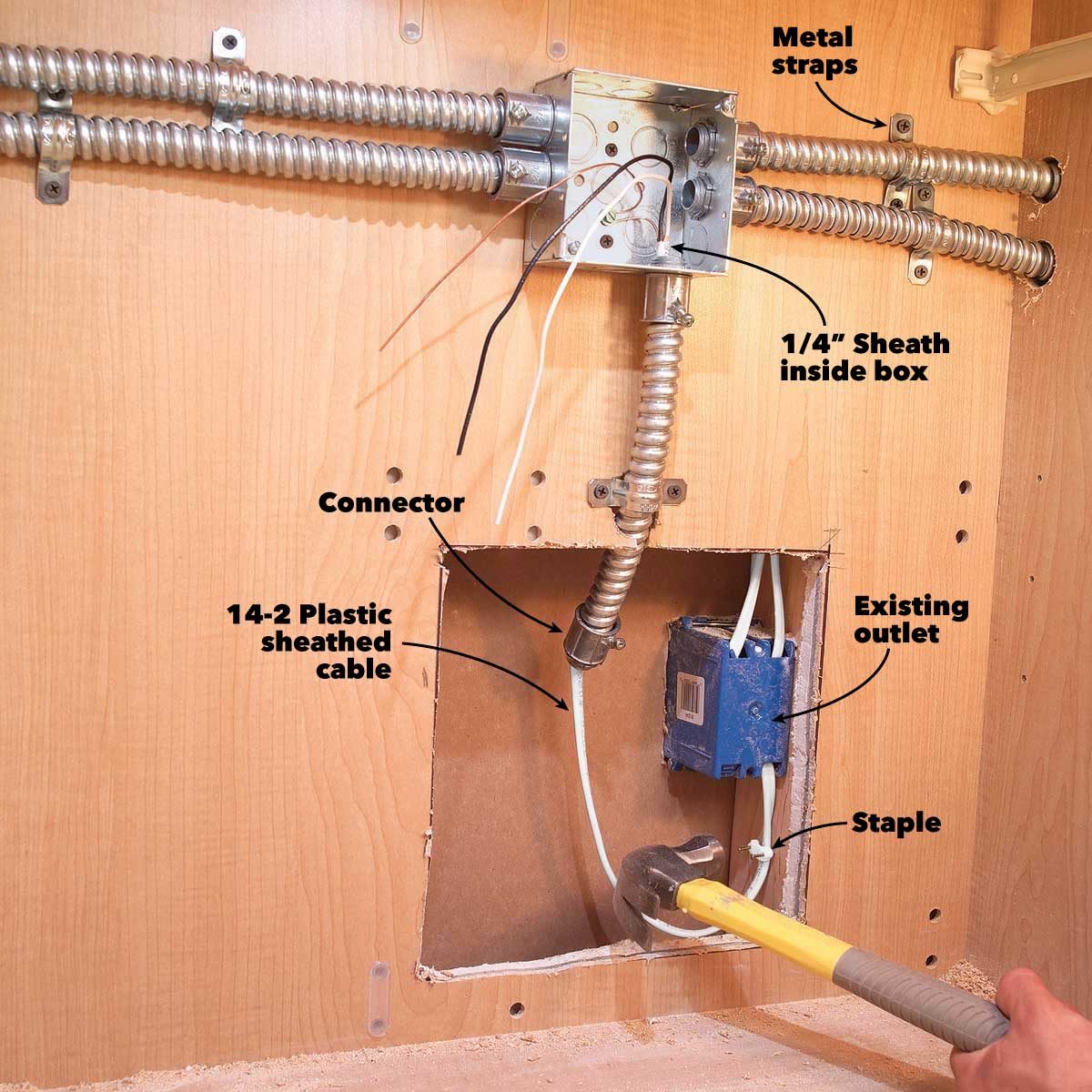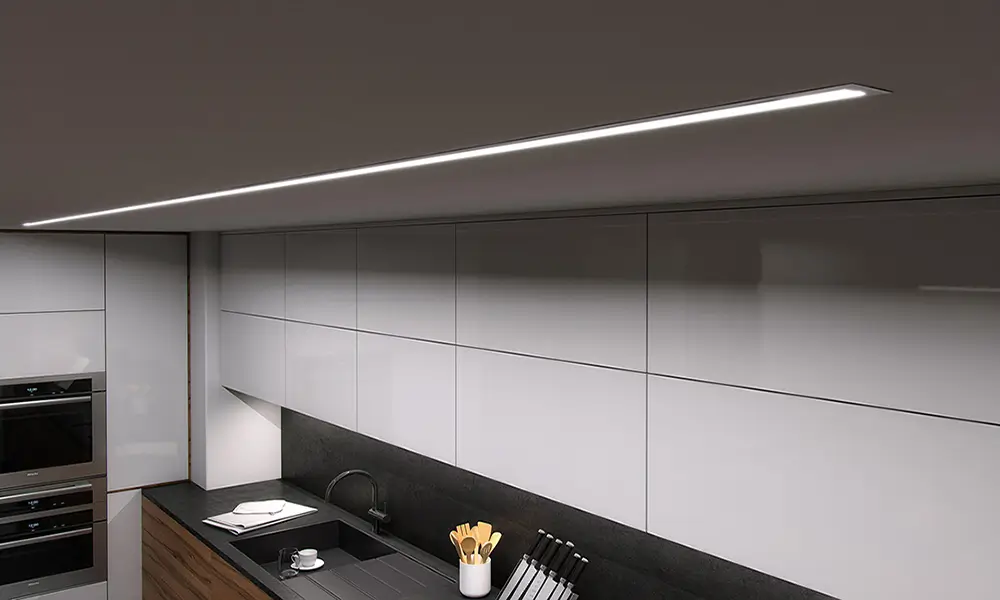Understanding Brightness Levels

When selecting under-cabinet lighting, understanding brightness levels is crucial. It ensures you choose the right amount of light for your needs, whether you’re illuminating a workspace or creating a cozy ambiance. Two key measurements help determine brightness: lumens and Kelvin.
Lumens and Their Relationship to Brightness
Lumens are the standard unit of measurement for light output. The higher the lumen rating, the brighter the light source. For instance, a 1000-lumen bulb will emit more light than a 500-lumen bulb. This means a 1000-lumen bulb will be brighter.
Kelvin and Its Influence on Light Color
Kelvin (K) measures the color temperature of light, which affects its perceived warmth or coolness. A lower Kelvin rating signifies a warmer, more yellowish light, while a higher rating indicates a cooler, more bluish light.
- Warm white (2700-3000K) is often used for creating a cozy and inviting atmosphere, making it suitable for living rooms and bedrooms.
- Neutral white (3500-4100K) offers a balanced light that’s ideal for general lighting, such as kitchens and bathrooms.
- Cool white (4500-5000K) provides a bright and crisp light, making it well-suited for task lighting in areas like offices or workshops.
Brightness Levels and Their Applications
Brightness levels play a significant role in determining the effectiveness of under-cabinet lighting. For instance, task lighting requires a higher level of brightness to illuminate work surfaces effectively.
- Task lighting: For tasks requiring precise detail, such as food preparation or reading, bright under-cabinet lighting with a lumen rating of 1000-1500 lumens is recommended. A cool white color temperature (4500-5000K) is often preferred, as it provides a clear and focused light.
- Ambient lighting: When used for general illumination or creating a mood, under-cabinet lighting can be less bright. A lumen rating of 500-800 lumens is sufficient for this purpose. A warm white color temperature (2700-3000K) can create a cozy and inviting ambiance.
Factors Influencing Brightness Needs

The brightness of under-cabinet lighting should be tailored to the specific needs of the space and the tasks performed. Several factors play a crucial role in determining the appropriate level of illumination.
How bright should under cabinet lighting be – Understanding these factors will help you choose the right brightness for your under-cabinet lighting, ensuring optimal functionality and aesthetics in your kitchen.
Task Requirements
The type of tasks you perform under the cabinets significantly influences the required brightness.
- Food preparation requires bright, even illumination to ensure accuracy and safety. Tasks like chopping vegetables, measuring ingredients, and preparing meals demand sufficient light to prevent eye strain and accidents.
- Cleaning tasks, such as washing dishes or wiping down countertops, also benefit from ample light. This allows you to see spills, dirt, and grime effectively, ensuring a thorough cleaning.
- Dining, while not requiring the same intensity as food preparation or cleaning, still benefits from soft, ambient lighting. Under-cabinet lighting can provide a warm and inviting atmosphere for dining, creating a pleasant experience.
Size of the Space
The size of the space under your cabinets directly impacts the amount of light needed. Larger areas require more light to illuminate the entire space evenly.
- Smaller kitchens with compact cabinets may require less powerful lighting than larger kitchens with expansive countertops.
- The length of the countertop also influences the required brightness. Longer countertops need more light to illuminate the entire surface adequately.
Color of Surrounding Surfaces
The color of the cabinetry and countertops can significantly affect the perceived brightness of the lighting. Darker surfaces absorb more light, requiring brighter lighting to achieve the desired illumination level. Conversely, lighter surfaces reflect more light, making the space appear brighter even with lower light output.
- Darker cabinets and countertops may require brighter lighting to compensate for the light absorption, ensuring sufficient visibility.
- Lighter surfaces, such as white or light-colored cabinetry, reflect more light, making the space appear brighter with less powerful lighting.
Practical Considerations and Recommendations: How Bright Should Under Cabinet Lighting Be

When choosing under cabinet lighting, it’s crucial to consider practical factors to ensure you achieve the desired brightness and functionality. This section delves into specific recommendations for brightness levels, bulb types, and fixture styles, allowing you to make informed decisions for your kitchen.
Brightness Levels for Different Kitchen Areas
The amount of light required varies depending on the specific task or area within the kitchen. The table below provides guidelines for common brightness levels:
| Area | Recommended Brightness (Lumens) | Task |
|---|---|---|
| Work Triangle (Sink, Stove, Fridge) | 300-500 lumens | Food preparation, cleaning, and general tasks |
| Countertop Preparation Area | 400-600 lumens | Detailed food prep, chopping, and knife work |
| Dining Area | 100-200 lumens | Ambient lighting for dining |
| Under Cabinet Lighting | 100-300 lumens | Task lighting for specific areas |
Choosing the Right Bulbs and Fixtures, How bright should under cabinet lighting be
Selecting the appropriate bulbs and fixtures for under cabinet lighting is essential for achieving the desired brightness and aesthetic appeal.
Bulb Types
- LED (Light-Emitting Diode): LED bulbs are known for their energy efficiency, long lifespan, and ability to produce a wide range of color temperatures. They are available in various styles, including strips, puck lights, and linear fixtures, making them versatile for under cabinet applications.
- Halogen: Halogen bulbs offer bright, white light, but they consume more energy and have a shorter lifespan compared to LED bulbs.
- Fluorescent: Fluorescent bulbs are more energy-efficient than halogen bulbs, but they may produce a less appealing light color.
Fixture Styles
- LED Strips: LED strips are thin, flexible lights that can be easily installed under cabinets. They provide a diffused, even light and are available in various lengths and colors.
- Puck Lights: Puck lights are small, circular lights that can be mounted on the underside of cabinets. They provide a focused beam of light, making them suitable for task lighting.
- Linear Fixtures: Linear fixtures are longer, rectangular lights that provide a broader and more even illumination. They are often used in larger kitchens or for areas requiring more extensive lighting.
Benefits and Drawbacks of Different Types of Under Cabinet Lighting
Understanding the benefits and drawbacks of each type of under cabinet lighting can help you choose the best option for your needs.
LED Strips
- Benefits: Energy-efficient, long lifespan, flexible, available in various colors, easy to install.
- Drawbacks: May require a separate power source, can be difficult to conceal the wiring.
Puck Lights
- Benefits: Provide focused light, easy to install, available in various colors.
- Drawbacks: Can create shadows, may not provide enough light for large areas, can be more expensive than LED strips.
Linear Fixtures
- Benefits: Provide even illumination, can be used for larger areas, often have adjustable brightness.
- Drawbacks: Can be more expensive than LED strips or puck lights, may require more installation time.
The brightness of under cabinet lighting depends on the task you’re performing. For prepping meals, you’ll want bright, white light, but for a relaxing atmosphere, a softer, warmer light is ideal. If you’re considering a coral and grey bedroom walls scheme, under cabinet lighting can add a touch of warmth and dimension to your space.
Ultimately, the right brightness is a matter of personal preference, so experiment to find what suits you best.
Choosing the right brightness for under cabinet lighting depends on the task at hand. If you’re prepping food, you’ll need a brighter light than if you’re just creating a cozy ambiance. But if you’re thinking about creating a space for cooking and living, you might want to consider the pros and cons of a studio versus a one-bedroom apartment, as discussed in this insightful Reddit thread: studio vs 1 bedroom reddit.
Ultimately, the best brightness for your under cabinet lighting will depend on your personal preferences and the specific activities you plan to do in your kitchen.